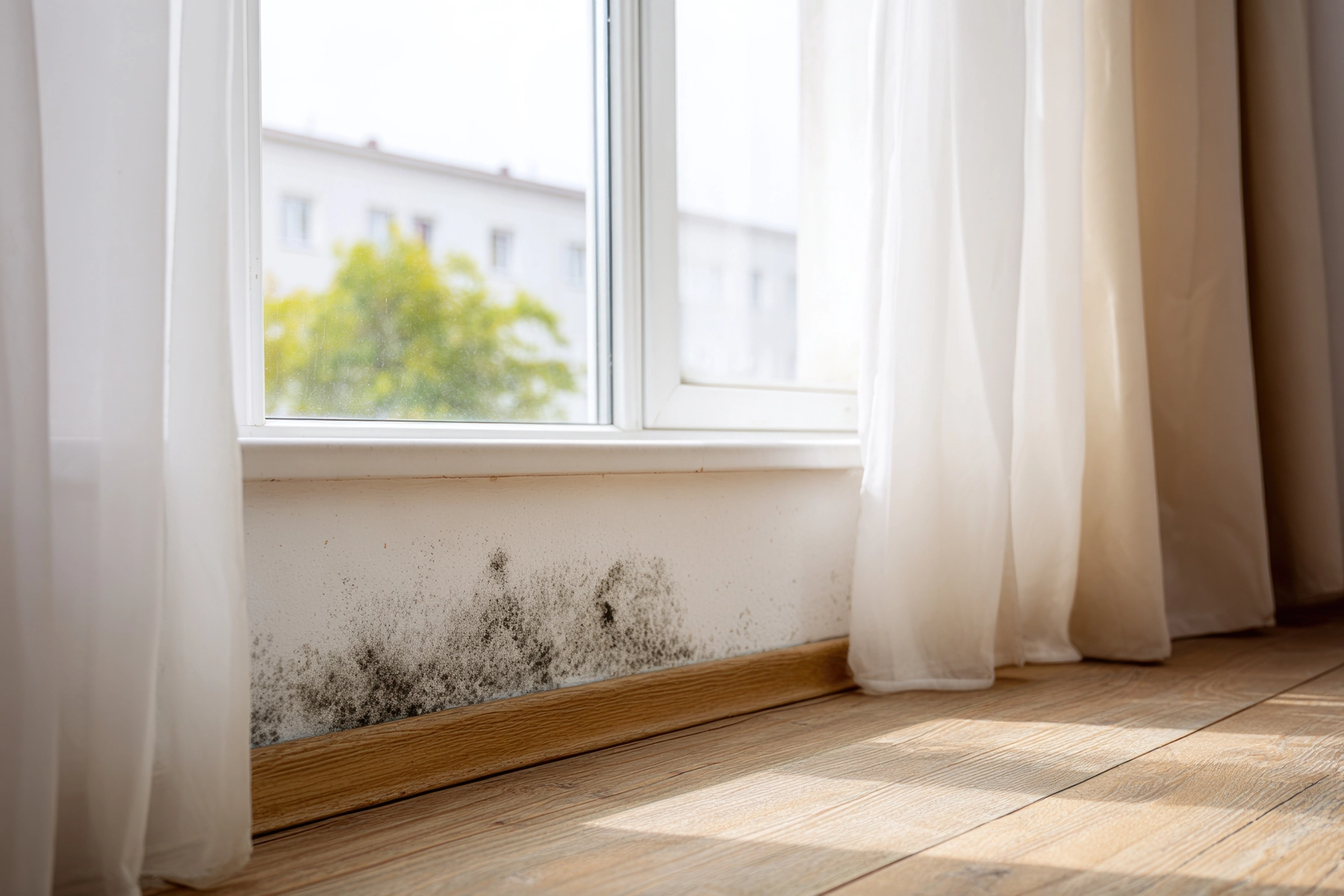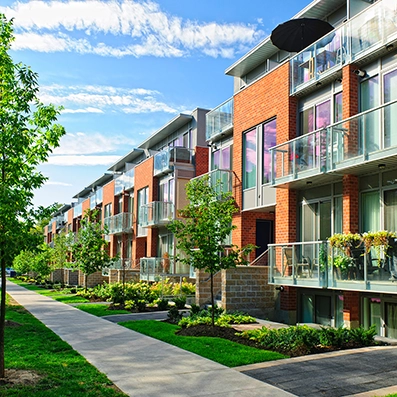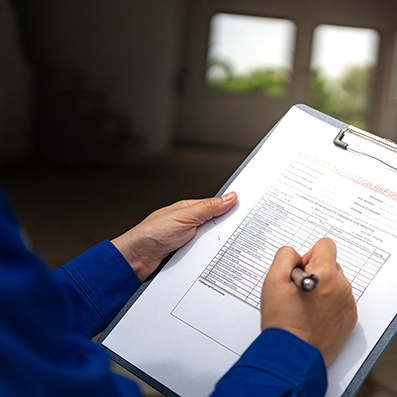All About Mold: What You Need to Know to Protect Your Home
Certified Yakima mold remediation specialists explain what causes mold, how to prevent it, and when to call a professional.

Understanding the Types of Mold, Health Risks, and How to Prevent Them
Mold is one of the most misunderstood issues homeowners face. It is common, natural, and present in every environment, yet it can also become a serious problem when it begins to grow and colonize inside a home. At Peak Pro Home Services, we have seen mold in every type of property across Yakima and Central Washington. Some cases are minor and easily corrected, while others require full remediation and structural repair.
We are certified in water restoration and mold remediation through the Institute of Inspection, Cleaning and Restoration Certification (IICRC). That means our team has the training, equipment, and scientific understanding to identify the real problem, correct it, and prevent it from coming back. Led by licensed, bonded, and insured general contractor Josh Shoemaker, Peak Pro Home Services brings decades of experience and professionalism to every project.
Our certifications include:
- IICRC Water Damage Restoration Certification
- IICRC Advanced Microbial Remediation Technician Certification
- National Home Builders Association Certified Aging-in-Place Specialist (CAPS)
These credentials ensure that we follow strict national standards when working with water damage, humidity control, and microbial growth. In this article, we will explain what causes mold, how to recognize it, and the proper steps for removing and preventing it in your home.
What Mold Really Is
Mold is not as mysterious or dangerous as many people think. It is a type of fungus that helps decompose organic material in nature. Spores are microscopic and exist everywhere — in the air we breathe, on every surface, and even in the food we eat. The problem begins when mold finds the right conditions to grow and colonize inside a home.
Mold needs only three ingredients to thrive: time, organic material, and moisture. We cannot stop time, and we cannot remove organic materials such as wood or drywall from a home. The only factor we can control is moisture.
Once moisture is present, mold spores can start to grow on almost any surface. When relative humidity stays above 60 percent or when building materials stay wet for more than 48 hours, conditions are ideal for mold to spread. That is why controlling moisture is the foundation of mold prevention.
Common Places Mold Grows
Mold can grow anywhere in a home, but certain areas are more prone to problems because of consistent moisture and poor ventilation.
Bathrooms
Bathrooms are the most common place homeowners notice mold or mildew. The two are often confused. Mildew is a thin film that builds up on damp surfaces and is usually gray or white. Mold is typically darker, thicker, and grows deeper into materials like drywall or wood.
One recent case illustrates this difference well. A homeowner sent us a photo of a green patch on their bathroom ceiling, worried that it might be mold. We inspected the area and found that the ceiling fan and attic exhaust vent were clogged with lint that had built up for more than a decade. The fan was overheating and shutting off, which meant the bathroom air was not being vented properly. The warm, moist air was trapped, and condensation was forming on the ceiling.
After cleaning the fan and exhaust vent, we restored proper airflow and eliminated the problem entirely. No mold remediation was needed, and the homeowner avoided thousands of dollars in unnecessary repairs.
Attics
In our Central Washington climate, mold often appears in attics, especially on north-facing roofs. Attic mold typically develops because of condensation, not leaks. Warm air from inside the home rises and escapes through small openings around light fixtures, unsealed ducts, or bathroom fans that vent directly into the attic instead of outdoors.
During the winter, when roof temperatures drop below freezing, that warm air reaches the dew point and forms moisture on the underside of the roof sheathing. The constant dampness provides the perfect environment for mold growth.
Proper attic ventilation and insulation are key to preventing this problem. When we perform mold remediation in attics, we work closely with local roofing professionals to correct ventilation and ensure that the issue does not return.
Crawl Spaces
Crawl spaces are another common area for mold growth in Yakima homes. The issue usually starts with water intrusion from plumbing leaks, irrigation runoff, or damaged vapor barriers. The vapor barrier, which covers the ground in a crawl space, is designed to prevent moisture from rising into the home’s structure. When it fails, humidity levels increase and mold begins to grow on the wooden joists and subfloor.
If left unchecked, crawl-space mold can become severe enough to weaken the structure of the home. In extreme cases, subfloors or joists must be replaced. Most homeowners are unaware of these problems until an inspection reveals visible growth or a strong musty odor.
The Health Effects of Mold
Mold affects people differently. For most healthy adults, everyday exposure to mold spores causes no noticeable reaction. However, for those with allergies, asthma, or compromised immune systems, mold can cause symptoms such as coughing, sneezing, watery eyes, or fatigue.
The real concern is when mold becomes concentrated in an indoor environment. A damp basement, poorly ventilated bathroom, or contaminated crawl space can create elevated spore counts that may cause respiratory irritation or worsen existing conditions. While not all molds are toxic, some species produce mycotoxins, which can pose additional risks with long-term exposure.
Our philosophy is simple: mold should not be feared, but it should be respected. The key is understanding when professional remediation is necessary and addressing the underlying moisture issue that allowed it to grow.
Professional Mold Remediation
Proper mold remediation is a detailed process that requires specialized training and equipment. At Peak Pro Home Services, we follow the IICRC S520 standard, which provides the framework for safe and effective mold removal.
Our typical remediation process includes:
- Assessment and Testing – We use moisture meters, thermal imaging, and visual inspections to determine the extent of contamination and identify the moisture source.
- Containment – We isolate the affected area with polyethylene barriers and create negative air pressure to prevent spores from spreading.
- Removal – Contaminated materials such as drywall or insulation are removed and disposed of safely.
- Cleaning – Remaining surfaces are HEPA-vacuumed, treated with antimicrobial solutions approved by the EPA, and agitated with tools such as wirebrushes to remove existing stains
- Drying and Restoration – The area is dried to safe moisture levels, and any structural materials are repaired or replaced.
Every project is documented with photographs and written reports that can be shared with realtors, homeowners, or insurance companies. This transparency ensures that the remediation meets both health and safety standards.

Preventing Mold in Your Home
The best way to deal with mold is to prevent it from growing in the first place. Here are a few steps every homeowner can take to reduce moisture and keep mold at bay:
- Maintain indoor humidity below 50 percent. Use dehumidifiers if necessary, especially in basements and crawl spaces.
- Use bathroom and kitchen exhaust fans during and after cooking or showering. Ensure that fans vent to the outdoors, not into the attic.
- Inspect and maintain your vapor barrier in the crawl space. Replace damaged sections immediately.
- Seal air leaks and insulate ducts to prevent warm air from entering cold spaces.
- Check for plumbing leaks and repair them promptly.
- Clean gutters and downspouts to direct water away from the foundation.
Regular maintenance and quick attention to leaks are the most effective tools for preventing mold growth.
When to Call a Professional
Minor mildew on shower grout or windowsills can usually be cleaned with household products. However, professional help is needed when:
- The affected area is larger than 10 square feet.
- Mold is growing inside walls, ceilings, or ductwork.
- You smell a persistent musty odor but cannot find the source.
- The home has experienced flooding or a significant plumbing leak.
Our team is trained to evaluate each situation and provide an honest recommendation. In some cases, homeowners only need basic cleaning and ventilation adjustments. In others, full containment and remediation are necessary.
Why Certification and Experience Matter
Hiring the right contractor is essential when dealing with mold. Because mold remediation involves health and safety considerations, it should only be performed by professionals who follow established standards. At Peak Pro Home Services, our IICRC certifications prove that we meet those standards every time.
Our experience in water restoration (S500), mold remediation (S520), and rodent waste cleaning (S540) ensures that every project is handled correctly from start to finish. We understand that mold is not just a cleaning issue; it is a building science issue involving airflow, insulation, and humidity control.
By working with a certified company, homeowners protect their investment and ensure that problems are resolved permanently rather than temporarily covered up.
The Peak Pro Approach
We approach every mold concern with honesty and professionalism. Our first priority is identifying the real cause of the problem. If the issue is simple, such as poor ventilation or condensation, we tell the homeowner exactly what needs to be done and why. If full remediation is required, we create a detailed plan that includes containment, cleaning, and preventive recommendations.
Our clients appreciate our transparency and documentation. Every project includes before-and-after photos, written reports, and proof that all contaminated materials were handled safely. This level of professionalism builds trust with realtors, homeowners, and property managers throughout the Yakima Valley.
Protecting Your Home and Family
Mold in your home does not have to be a crisis. With the right knowledge and professional help, it can be addressed efficiently and affordably. The key is acting quickly when you see signs of moisture or discoloration.
If your home inspection report lists possible mold, or if you suspect a problem in your attic or crawl space, let us help. Upload your inspection report or send us the link through our contact form for a 24-hour estimate, or book a free 15-minute phone consultation to discuss your concerns with a certified expert.
Peak Pro Home Services proudly serves Yakima and all surrounding areas with certified, professional mold remediation. Our commitment to quality and safety ensures that your home stays clean, healthy, and protected for years to come.

Let's work together!
Book your free phone consultation or request a 24-hour estimate today.
Our recent articles

Yakima Landlord Services: Keeping Rental Properties Safe and Reliable

Yakima Home Services for Seniors: Helping Loved Ones Age in Place

